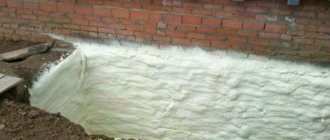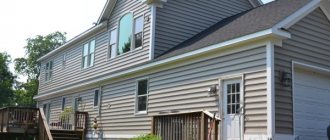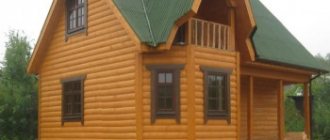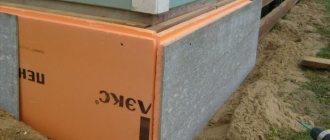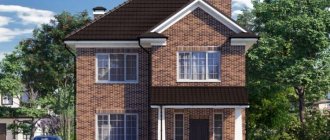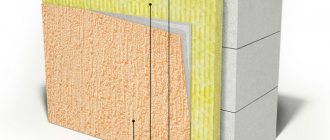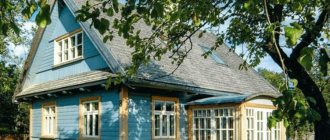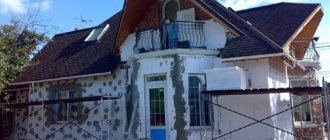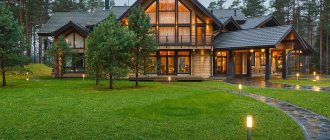Some building materials from which walls are erected immediately imply the need for exterior finishing of the house: the resulting picture is very unsightly. Others may lose their appeal over time. And the third case is extensive crack formation, which is “treated”, but the results remain visible. In all these cases, the question arises: “How to sheathe the outside of the house.” Moreover, most often it is necessary to “sheath” it - without using mortar or other similar means that require a lot of money and time. I want to do everything quickly and, very preferably, inexpensively, and, if possible, with my own hands. Oddly enough, there is a choice of materials and technologies, and a considerable one.
How to cover the outside of a house: review of materials
Among the facing materials used in Russia, it is necessary to highlight several of the most popular ones. These have already become traditional
- siding
- facade panels.
- brick
- stone
- plaster
As well as innovative types of cladding:
- flexible wall tiles
- fiber cement siding
- foam siding.
To choose finishing materials for the facades of houses, we will analyze each of them in more detail according to their key qualities and benefits.
Gypsum plasterboard sheet (GKL)
Gypsum plasterboard sheet ( GKL ) is the most common sheet material, the basis of which is gypsum, pasted on both sides with cardboard. It is used both in construction and in the finishing of individual premises. The sheet has a thickness of 7-12 mm. There are several types of plasterboard sheets: moisture-fire-resistant (GKLVO), fire-resistant (GKLO), moisture-resistant (GKLV), ordinary (GKL). They are most often used in the construction of partitions and suspended ceiling structures, as well as for leveling walls.
Read more about gypsum boards: Types and uses of drywall
Plaster for the facade: finishing features
Plaster for the facade: finishing features (photo No. 2)
The market offers mineral, acrylic, silicone, silicate plaster of different colors and textures.
- Mineral plaster can crack and peel if application technology is violated. Not vibration resistant. If the house is located near airports, railways, or in areas of seismic activity, it is better to choose a different finish.
- Acrylic plaster is more resistant to abrasion and cracking, but its color fastness is lower.
- Silicone plaster is not afraid of moisture, is resistant to aggressive environments and ultraviolet radiation, but also costs on average 3 times more than acrylic.
- Silicate plaster is the most elastic. Resistant to moisture, fading, aggressive environments and mechanical damage. But it costs 2-2.5 times more than acrylic.
The service life of mineral plaster is about 15 years, acrylic and silicone plaster is 20-25 years.
Strengths:
- High vapor permeability: the walls underneath breathe.
- Environmental friendliness: plaster does not emit harmful substances.
- Suitable for different architectural styles. It is better to use it in a classic style or half-timbered style, because... simplifies the look of the house
Weak sides:
- Many types of plaster set quickly. Therefore, the work requires professional qualifications and should only be performed by master plasterers.
- Can only be applied at positive temperatures.
- Over time, it cracks, fades, and wears out. Requires regular maintenance, updating and repair. The walls get dirty from seasonal pollution.
- Its service life is relatively short.
- As a result, savings can be costly: you need to pay for the work of professionals, and the plaster itself is applied in 3-6 layers.
Fiberboard (Fibreboard)
Fiberboard ( fibreboard ) or hardboard – sawdust and small wood shavings pressed under high temperature using a special additive for gluing . The additive serves as a binding component, the content of which is quite low. This factor classifies fiberboard as an environmentally friendly building material. Fiberboard is a material that can be used in rooms with low humidity. It cannot be used in damp areas. Most often used for leveling floors and walls, as well as in furniture production. The sheets have a thickness of 3.2-5 mm.
Read more about fiberboard: Application and characteristics of fiberboard
Natural stone: for which houses can it be used?
Natural stone: for which houses can it be used? (photo No. 3)
Stone for exterior decoration does not fade, is not afraid of humidity and temperature changes, and is environmentally friendly. Attached with special glue. The service life of the cladding largely depends on the quality of this glue. Over the years, stones may fall off the façade.
The overall appearance of the facade depends on the location of the finishing elements. It is important to take into account the size of the stones, make uniform seams, and combine the pattern correctly. The work can only be trusted to professionals: there is no room for savings, the quality of the facade depends 100% on the skill of the mason.
Strengths:
- Status: expensive facade for expensive houses
- Durability: This is the most durable finish available today when installed by a professional.
- Investment in real estate as an asset: such a house will be in demand on the market for permanent residence.
Weak sides:
- It is heavy, so it is not suitable for any facade.
- Only a highly professional mason should install natural stone
- Work can only be carried out in warm, dry weather, otherwise the glue may lose its properties and the stones will quickly begin to fall off.
- To make the facade look beautiful, you need to find a good professional.
- Stone finishing is expensive considering the work.
Gypsum particle board (GSP)
Gypsum particle board ( GSP ) is a durable material made by pressing gypsum with wood chips without the use of glue or resins. The semi-dry production method involves adding water and uniformly applying chips over the entire surface area. This is done in order to increase the load-bearing capacity of the structure. GSP refers to environmentally friendly, safe building materials. The sheet density is 1250 kg/m3. Used for cladding internal walls, ceilings, floors, and arranging interior partitions. The combination of gypsum and wood chips in GSP provides the material with properties such as: good sound insulation (up to 32-35 dB), maintaining a balance of moisture exchange in the room, impact resistance, non-flammability, and high strength. The front side of the slab has a light and smooth surface. Sheet thickness 8-12 mm. There are the following types of GSP: regular and moisture-resistant (GSPV).
Read more about GSP: Application, operating features and characteristics of gypsum particle boards (GSP)
Siding: simplicity, convenience and comfort
Siding: simplicity, convenience and comfort (photo No. 4)
The finishing of the facade with siding is carried out according to the principle of a ventilated facade. That is, it is necessary to leave a gap between it and the wall for free air circulation. This preserves the walls and allows you to insulate the house under the cladding. The finish itself is one of the most affordable on the market.
There are 2 types of siding:
- Vinyl is frost-resistant, can withstand temperatures down to -50 degrees, but over the years it fades in the sun.
- Acrylic is UV resistant, can withstand temperatures up to +38 degrees, but is more expensive than vinyl.
Strengths:
- Easy installation: you can do it yourself.
- Light weight: suitable for any building, even without a foundation.
- Affordable: This is one of the cheapest cladding materials on the market.
- Can be installed all year round, in any weather, at temperatures down to -10 degrees. In this case, the material must be stored and cut in a warm, dry room.
Weak sides:
- Less durable than other finishes. This parameter greatly depends on the quality of the material: if the siding is cheap, it can be damaged by strong hail.
- Vinyl siding can fade in the sun. Although this does not affect the strength in any way: the panels will successfully perform their function, protecting the insulation and walls of the house.
Features of the use of siding in the cladding of wooden housing
Wooden buildings attract with their spectacular, natural appearance, the preservation of which is a difficult task. The installation of external cladding helps protect wooden walls from destructive dampness and mold.
The most common material for covering a wooden building is vinyl siding. The most in demand are products in pastel colors (as they are the least fading) and with imitation of natural materials. Professionally installed siding can significantly extend the life of your home. It is more practical to use a galvanized profile as a frame, which is not prone to corrosion and deformation.
Installation process of vinyl siding with waterproofing Source orgtorg.org
Facade panels: an alternative to expensive stone made from durable polymer
Facade panels: plastic analogue of stone (photo No. 5)
Facade panels look like a stone or brick facade. Made from durable polymer. Stronger and more stable, but also more expensive than siding. Also mounted on the sheathing.
There are stiffening ribs on the back side of the panel, thanks to which they do not bend or break during everyday use, even if there is a large and strong hailstorm.
Strengths:
- A variety of colors and textures: stone or brick, different shades and shapes.
- Durable: thanks to increased thickness and stiffening ribs.
- Lightweight: 5-7 times lighter than stone or brick finishes.
- Versatility: suitable for any home, even a frame one.
- Simple installation: you can get the job done without involving specialists.
Weak sides:
- Requires a larger budget than classic siding. But the result is different.
Asbestos cardboard (Asbestos cardboard)
Asbestos cardboard (Asbestos cardboard) is a building material that is made on the basis of chrysolite asbestos fiber, with the addition of a binder component (starch). This type of sheet material is fire-resistant, has insulating properties, high mechanical strength, alkali resistance, and durability. Sheets of asbestos cardboard are used for fire protection and thermal insulation, for sealing joints of equipment and communications. There are three types: KAON-1, KAON-2 - general purpose; KAP - spacer. The method of laying on the insulated surface does not require special work skills or the use of special tools. The thickness of the sheet material is 1.3-10 mm depending on the type.
Read more about Asbestos Cardboard: Application of Asbestos Cardboard and its technical characteristics
Wall flexible tiles: pros and cons
Flexible wall tiles: pros and cons (photo No. 6)
These are facade tiles based on fiberglass, bitumen and basalt granulate. Imitates stone or brickwork. Suitable for frame and any other houses of laconic form.
The tiles are mounted on OSB boards using a special adhesive composition. Work must be carried out in warm, dry weather.
Flexible tiles: advantages
- A light weight.
- Suitable for any building and even for cladding fences and fences.
- Easy installation.
Flexible tiles: disadvantages
- Before installation, you need to level the wall surface.
- When heated, bitumen can release harmful substances.
- Narrow range of colors and cladding options.
Fiberboard (MDF)
Medium Density Fiberboard ( or MDF for Medium Density Fiberboard) - made by pressing wood chips (dry method) under high pressure and temperature . Carbide resins are used as an adhesive composition. Used for finishing furniture, arranging interior doors, and as a decorative finish.
Read more about MDF: Characteristics and scope of MDF
Fiber cement siding: pros and cons
Fiber cement siding: pros and cons (photo No. 7)
Fiber cement siding is made from cellulose fibers and cement with the addition of quartz sand, water and mineral additives. It is durable, resistant to aggressive environments and environmentally friendly. But it is quite heavy, so it is not suitable for any building. If the house is not new, it is necessary to conduct an expert assessment of the condition of the foundation and supporting structures.
Advantages of fiber cement siding
- High strength and frost resistance.
- Resistance to moisture, fungi and pests.
- Wide range of colors and textures.
Fiber cement siding: disadvantages
- Labor-intensive installation. Not every master can handle it on their own.
- Difficulties in purchasing components. As homeowners admit, it is not always possible to purchase all the necessary components. Some people are smart and make do with what they have. Others order missing items and wait for delivery from abroad.
Wood-laminated board (plywood)
Wood-laminated board (plywood) is a material based on wood veneer. The peculiarity of this type of sheet material is that the veneer layers are laid perpendicular to each other and connected by pressing with the introduction of a binder component. The material has high strength and is hygroscopic. Used for making furniture, building walls and bases for flooring. The plywood sheet has a thickness from 4 to 24 mm.
Read more about Plywood: Scope of application of plywood and its characteristics
Wood-look façade board made of foam siding
Facade board made of foam siding (photo No. 8)
The ALTA BOARD facade board is the first foam siding produced in Russia. Thick and durable like fiber cement panels and lightweight like classic siding. Foam siding is approximately 3 times lighter than fiber cement siding. Suitable for any building and does not require wall alignment.
"ALTA BOARD" repeats the shape of wooden siding mounted in a herringbone pattern. But, unlike wood, it does not support combustion and is resistant to moisture and temperature changes. Does not require any special care - just wash the panels with water from a hose.
Strengths:
- Lightweight, does not place additional load on supporting structures. Suitable for any home.
- Resistant to moisture, mold, fungi and pests.
- Does not fade in the sun.
- Easy to install. You can handle the work yourself.
Weak sides:
- Installation is only “herringbone”, but this is a classic and tradition.
- The price is higher than regular siding, while the panels themselves are 6 times thicker and stronger (6 mm versus 1.1 mm).
Appearance
The choice of siding for cladding a house is influenced by its appearance. Most consumers prefer this material due to the fact that it can help create the desired appearance of the facade at a minimum cost. A set of facing panels and a rich color palette allow you to achieve the desired effect.
Types of components
Acrylic or vinyl siding consists of a number of components necessary for its installation on the wall. These are, in particular:
- wall panels;
- auxiliary panels;
- strips for door and window openings;
- edging strips.
In addition to these details, various fittings are used, as well as soffit panels and block houses, which are not siding in the strict sense of the word. Which is better - block house or siding, depends on the purpose and type of cladding.
Row panels
When choosing what kind of siding is needed, first of all, pay attention to the ordinary panels, because they form the basis of the covering for the cladding. This material for the house in its appearance resembles wooden boards, mounted from bottom to top, overlapping.
Thanks to this installation method, the thin material receives additional strength. To produce such panels from polyvinyl chloride, extrusion is used - drawing a liquid substance through technical devices, thanks to which they acquire the desired shape and characteristics.
Sheathing a residential building with siding is quite simple due to the fact that ordinary wall panels are equipped with special fasteners - in the lower part they are hook-shaped, and in the upper part they look like a groove for holding the hook. Perforations above the grooves add additional strength to the fastening.
For installation, you just need to insert the lower hook into the upper groove of the panel already installed on the facade. The upper part of the material is attached to the sheathing using self-tapping screws or nails with a wide head. I overlap the panels horizontally, sometimes using a special profile. All rows are installed in the same way.
Auxiliary
When thinking about which siding to choose, you should not forget about the auxiliary panels, with the help of which canopies, gables, cornices and other building elements, in addition to walls, are hemmed. The material from which auxiliary panels are made is the same as ordinary ones, but the quality is usually better, due to the fact that greater flexibility is required from the former.
Trims for window and door openings
The choice of siding is not limited to panels - window and door openings for cladding require the use of special profiles. The latter belong to the category of additional elements that combine slopes with platbands. They are secured with plastic corners and J trim.
Edging
Another type of plank that looks similar to the previous one is edging. It is used as the upper plinth and the inner corner of the roof eaves.
Soffit panels
Strictly speaking, soffits do not belong to the category of vinyl siding, but are an independent product. They are sometimes called gable siding. They differ in shape from siding panels and are intended to decorate only roof overhangs. There are two types of spotlights:
- with perforation;
- without her.
Perforation provides additional ventilation, which is why such models are more expensive.
Overhangs are hemmed with soffits in order to hide the roofing pie. They are often used even in projects where wall cladding is not provided. Manufacturing companies offer a wide variety of color solutions for such panels, both from PVC and other materials.
The panels are laid only in a horizontal position, since a vertical position leads to their rapid damage. In addition to perforation for ventilation, soffits differ from ordinary siding panels for the better in their flexibility, but do not withstand exposure to the sun and precipitation. It is difficult to choose an option that will not fade in the sun.
How to choose a color
The color of the siding is chosen based on personal wishes and taking into account the durability of the paint. Today, consumers are offered a huge number of color solutions, some of which imitate natural materials, while others are bright.
What material to use to decorate the façade of a house: summary table
Let's compare materials based on key indicators:
- Environmental friendliness
- Strength
- Fire safety
- Temperature range of use
- Moisture resistance
- Resistance to temperature changes and aggressive environments
- Color fastness
- Minimum service life
- Installation features
- Maintenance during use
- Availability.
| Exterior plaster | A natural stone | Siding | Facade panels | Flexible tiles | Fiber cement siding | Facade board "ALTA BOARD" | |
| Environmental friendliness | Combined material, environmentally friendly | Natural environmentally friendly material | Non-natural material, environmentally friendly | Non-natural material, environmentally friendly | Unnatural material | Non-natural material, environmentally friendly | Non-natural material, environmentally friendly |
| Strength | Average | High | Average | High | Low | High | High |
| Fire safety | Does not burn | Does not burn | Does not support combustion | Does not support combustion | Medium flammability, self-extinguishing | Does not burn | Does not support combustion |
| Temperature Range | -30…+45 | -60…+80 | -60…+80 | -60…+60 | Up to +110 | -40…+80 | -50…+60 |
| Moisture resistance | + | + | + | + | + | + | + |
| Resistance to temperature changes | Depends on the type of plaster | + | + | + | + | + | + |
| Resistance to aggressive environments | + | + | + | + | — | + | + |
| Color fastness | Depends on the type | High | Depends on the type | High | High | High | High |
| Life time | 15…25 years | From 30 years or more | Up to 30 years or more | Up to 30 years or more | Up to 30 years or more | Up to 50 years | Up to 30 years or more |
| Installation | Only in warm dry weather. | Mounted on an adhesive mixture. Only in warm, dry weather | Mounted on the sheathing. All year round. | Mounted on the sheathing. All year round | Mounted on OSB boards using a special adhesive mixture. Only in warm and dry weather. | Mounted on the sheathing. All year round | Mounted on the sheathing. All year round down to -10 °C. |
| Care | Wash with water. Can be repainted | Wash with a hose | Wash with a hose and non-abrasive cleaners | Wash with a hose and non-abrasive cleaners | Wash very carefully | Wash with a hose and non-abrasive products. Can be repainted. | Wash with a hose and non-abrasive cleaners |
| Cost/sq.m, from | 600 rub. | 2500 rub. | 250-400 rub. | 770 RUR | 800 rub | 1350 rub. | 950 rub. |
Gypsum fiber sheet (GVL)
Gypsum fiber sheet ( GVL ) is a building material that contains gypsum with loose cellulose waste paper. Differs from gypsum plasterboard in increased strength. Scope of application – dry floor screed, creation of interior partitions, suspended ceilings. GVL is easy to use and easy to finish. The sheet has a thickness of 10-12.3 mm.
Read more about GVL: Application, technical characteristics and features of GVL
How to protect yourself from formaldehyde fumes
First of all, it is necessary to use only EO and E1 slabs indoors. Before installation, it is advisable to keep the material in the open air (protected from moisture) for about 4 months so that formaldehyde vapors disappear.
A room in which OSB was used should be ventilated as often as possible and avoid overheating. At temperatures above 30ºС, formaldehyde evaporates very actively. For the same reason, air humidity above 70% should be avoided.
Read more in the article “Chips of the correct orientation”
Cement particle boards (CSP)
CSP (cement-bonded particle board) consists of approximately one-third chips and two-thirds cement. About 3% of its volume consists of additives designed to strengthen the slab, make it moisture- and fire-resistant, and also “make friends” with plant fibers and concrete. Without the use of chemicals, these materials do not mix, primarily due to the sugars contained in the wood. It is important that among the additives used there are no substances hazardous to humans or the environment, so that CBPB can be confidently called environmentally friendly.
Advantages. DSP is a “breathable” material,
so it can be safely used for interior decoration. Its vapor permeability is 0.03 mg/(m h Pa) and these are quite high figures.
In addition, DSP is distinguished by high frost and moisture resistance.
It cannot be called completely insensitive to water, but even if you soak the slab for a day, its humidity will rise by only 7% - from 9% to 16%. In this case, the linear dimensions of the product and its thickness will not change so much that this poses a problem.
The material perfectly resists longitudinal deformations
, which allows it to be used to strengthen the load-bearing capacity of walls. It is also worth noting the high strength, sound absorption ability and immunity to attacks by fungus, insects and small rodents.
The length of the DSP board varies from 2.7 to 3.2 m, the thickness is 8-36 mm, and the width is always the same - 1.25 m
Flaws.
First of all, the panels are heavy, making transportation and installation difficult. Thus, a slab 36 mm thick and 3.2 m long weighs almost 200 kg. However, usually in construction they use 10-16 mm panels weighing no more than 85 kg. A team of 3-4 people can work with them.
Where is it used?
Quite often, DSP is used
for cladding facades
. Slabs that have not undergone the sanding procedure in production are covered with plaster over a reinforcing mesh, while sanded slabs are primed and painted or left in their original form.
In frame house construction, DSP slabs are used for flooring and also as external wall cladding
In addition, DSP is often used for formwork
. Even the most complex shapes can be assembled from rigid, durable, easy-to-work and virtually warp-resistant slabs. If the formwork is permanent, the DSP also serves as additional hydro- and thermal insulation.
Cement particle boards can also be used as a wall material. More precisely, they serve as the basis for sandwich panels
, which allow you to assemble a house, like a designer, in a few weeks.
This material is suitable for rough wall cladding
, even in wet areas. Rough slabs are plastered, covered with wallpaper, covered with facing tiles, etc. You can build an interior partition from thick panels by securing them to a metal or wooden frame.
And finally, cement bonded particle boards are used for floors
.
Read more in the article “A whole collection of advantages”
Drywall
The basis of plasterboard sheet (GKL) is a gypsum core. It is covered on both sides with durable cardboard, which can then be decorated with wallpaper, paint, ceramic tiles, PVC panels, etc. The length of the facing sheets is from 2 to 4 m, the width is 0.6 and 1.2 m, and thickness - from 6.5 to 24 mm. The scope of plasterboard is very wide, but most often it is used for cladding walls and ceilings, as well as for the construction of light partitions. GCR panels can be attached to the base with special glue or mounted on the frame with screws.
Advantages
. With its help, you can decorate a skewed, cracked ceiling, level out uneven walls, or turn a crumbling brick partition into a perfectly smooth surface, ready for painting, wallpapering or tiling. It is also important that it is easy to hide all engineering communications behind the casing.
A huge advantage is the low weight of the plasterboard sheet. The weight of 1 m² of gypsum board construction with a thickness of 12.5 mm is about 28 kg, so when arranging a room you can only think about the convenience of the layout, without wondering whether the floors will withstand additional loads.
About 93% of the sheet mass is environmentally friendly gypsum, the same one that has been used for a long time in architecture and orthopedics
Flaws
. The main one is fragility, and, unfortunately, nothing can be done about it. Using a plasterboard wall as a load-bearing wall is out of the question. In addition, it should not be loaded with excessively heavy objects, such as hanging furniture. However, with a correctly calculated design and well-chosen fasteners, a plasterboard wall can withstand loads from 5 to 30 kg per fastener.
There are two main types of drywall - regular (GKL) and moisture-resistant (GKLV).
The latter includes additives that significantly reduce water absorption and inhibit the growth of bacteria. Unfortunately, such protection is not absolute, and the material will not withstand direct contact with water, but nevertheless, GKLV is actively used in the decoration of bathrooms and kitchens. It is perfect as a base for tiling. GKL and GKLV can be distinguished by color: ordinary sheets are covered with gray cardboard, moisture-resistant ones are covered with green.
